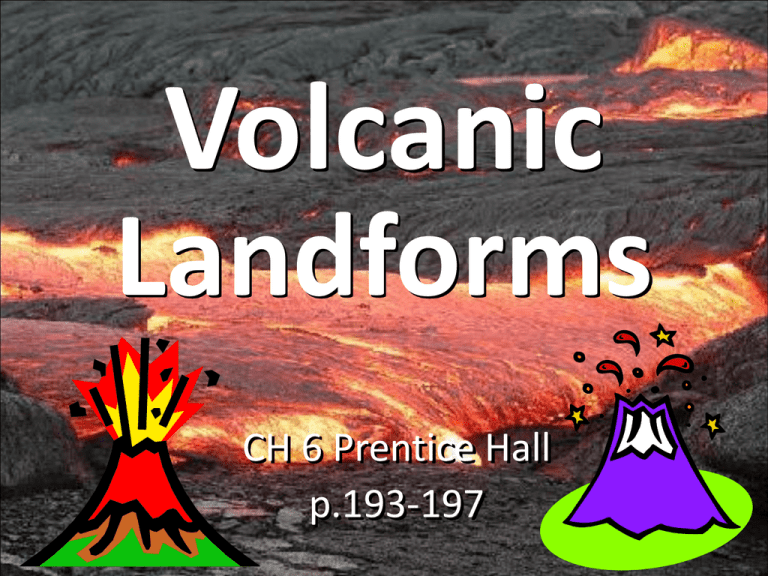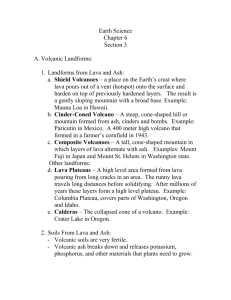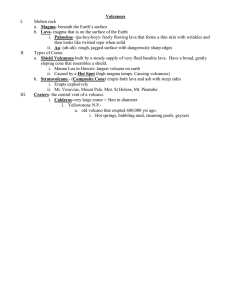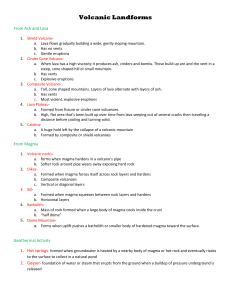Volcanic Landforms CH 6 Prentice Hall p.193-197
advertisement

Volcanic Landforms CH 6 Prentice Hall p.193-197 Shield Volcano • A wide, gently sloping mountain. – Lava pours out in thin layers and harden on top of older layers. – Viscosity= Low Cinder Cone • A steep, cone-shaped hill or mountiain. – If lava is thick and stiff it may produce ash, cinders and bombs. – Paricutin in Mexico (farmers field 400m high) – Viscosity = High Composite Volcano • A tall, cone-shaped volcano which alternates eruptions of lava flows with explosive eruptions of ash, cinder and bombs. • Viscosity= High/Low • Examples: – Mt. St Helens – Mt. Fuji in Japan Lava Plateau • Eruptions form high, level areas by flowing from several long cracks in an area. • Thin runny lava travels far before cooling and solidifying. • The flooding process repeats again and again building up high plateaus over millions of years. – Columbia Plateau (Washington, Oregon, & Idaho) Caldera • A huge hole formed from an enormous eruption that empties the main vent and magma chamber beneath the volcano. • The hollow mountain then collapses inward due to lack of support. • Fills with pieces of the volcano, ash and lava. – Crater Lake in Oregon Soils from Lava & Ash • Ash releases potassium, phosphorus and other materials that plants need. • Soil develops and plants are able to grow. • The richest and most fertile soils. Volcanic Neck • Forms from when magma hardens in a volcano’s pipe. – The softer rock wears away, exposing the hard rock. (weathering and erosion) Sill • Magma that squeezes and hardens between layers of rock. – (Horizontal like a window sill B in the diagram) Dike • Magma that forces itself across rock layers and hardens. – (Vertical, cuts through rock layers C in the diagram) Batholith • Large rock masses form that form the core of many mountain ranges. • Formed when a large body of magma cools inside the crust. – D in the diagram Dome Mountain • Formed by smaller bodies of magma, when rising magma is blocked by horizontal layers of rock. – Forces rock layers to bend upward into a dome shape. – Rock layers above eventually erodes and leave the core exposed.






